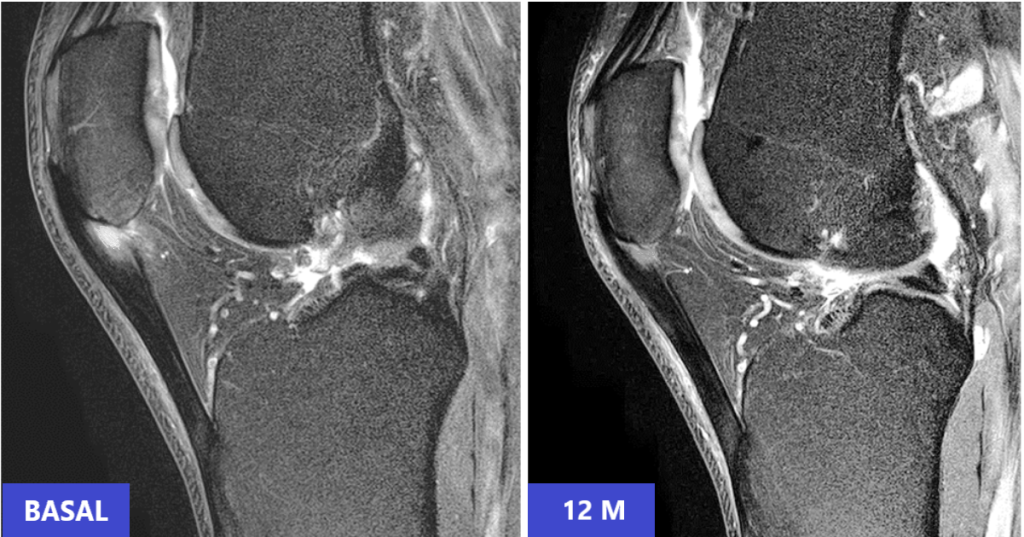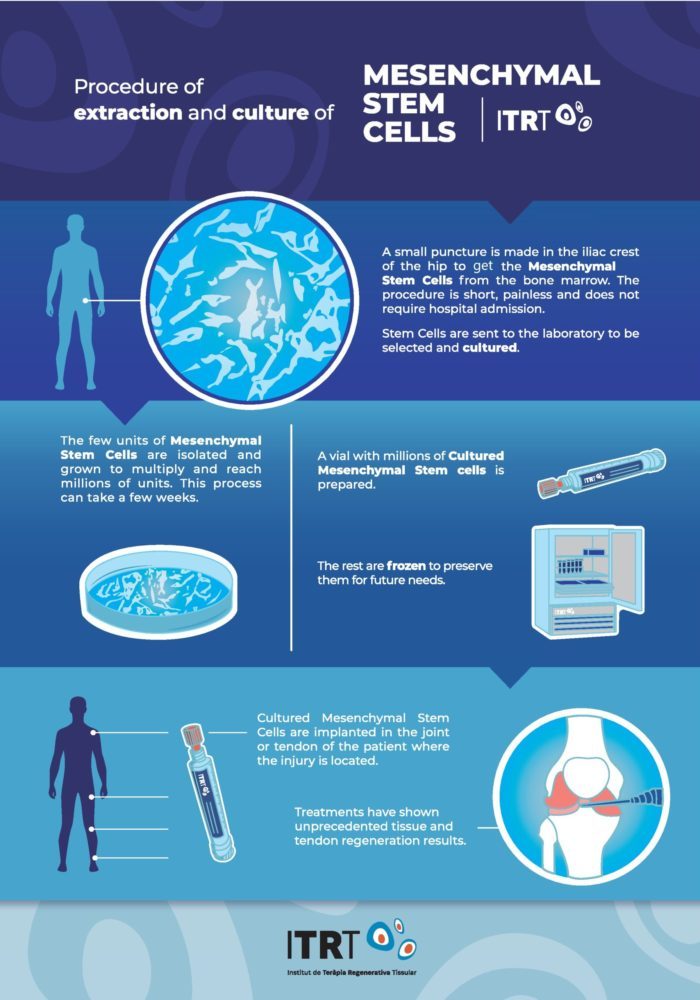Patellar Tendon Tear
Patellar Tendon Tear
+300
Tendons healed with Cultured Stem Cells
+80
Patellar tendons healed with Cultured Stem Cells
2
Clinical Trials on tendon regeneration. The only scientific evidence worldwide.
+300 |
+80 |
2 |
Tendons healed with Cultured Stem Cells.
Patellar tendons healed with Cultured Stem Cells.
Clinical Trials on tendon regeneration. The only scientific evidence worldwide.
Patellar Tendon Tear
Tendon injuries
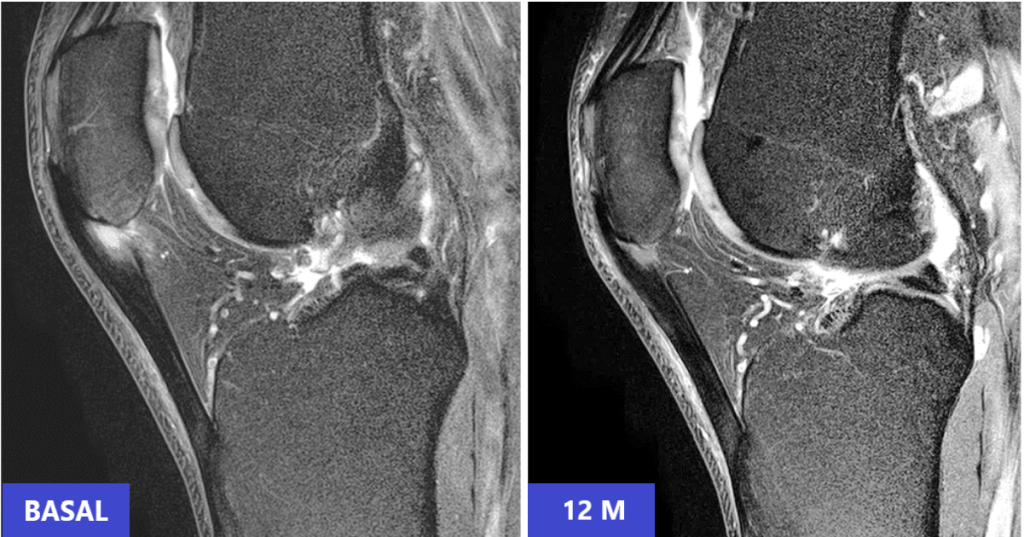

Patients

Clinical Trials (Largest scientific evidence worldwide)

Doses of Cultured Stem Cells (CMSC)

Endorsed by health authorities
The Patellar Tendon
The patellar tendon is a fundamental structure in the anatomy of the knee. It connects the kneecap (or patella) to the tibia, enabling leg extension and playing a key role in activities such as walking, running, jumping, and climbing stairs.
Thanks to this tendon, the thigh muscles can transmit force to the leg, making coordinated and stable knee movement possible.
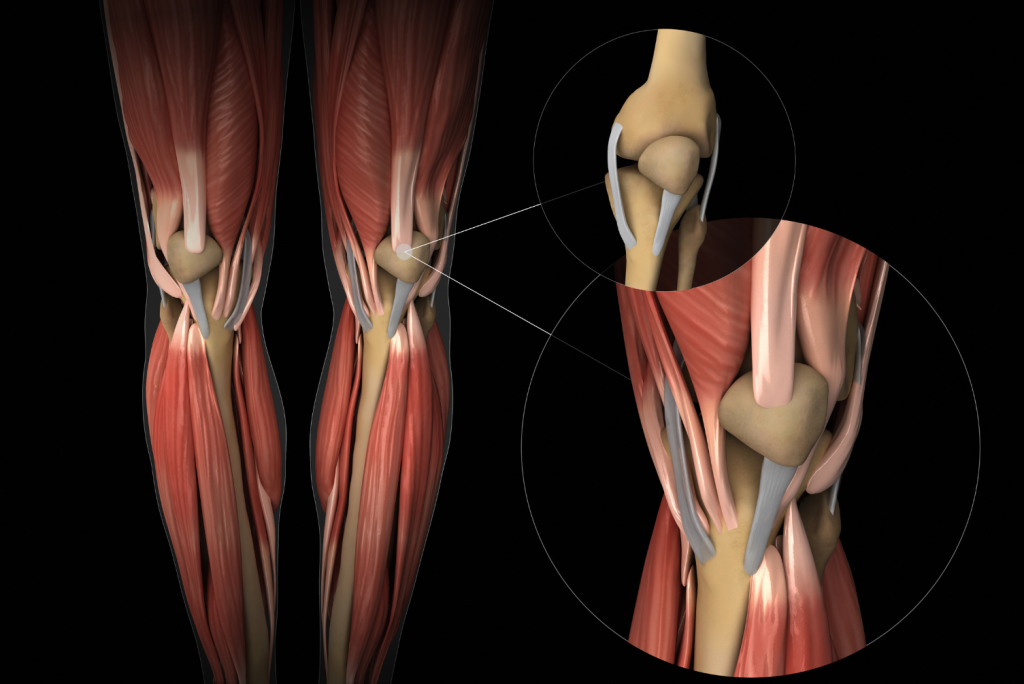
Challenges in the treatment of Patellar Tendon Tears
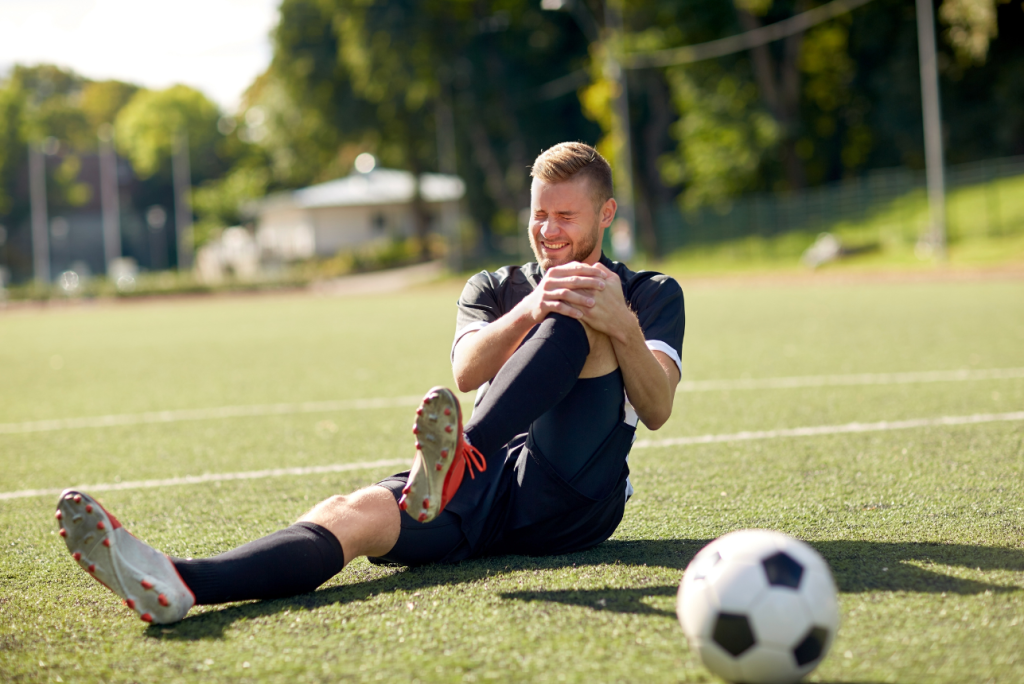
Treating patellar tendon injuries poses several challenges. Below are some of the most significant:
- Anatomical Complexity: The position and function of the patellar tendon make it a vital component for mobility, but also challenging to treat without impacting the overall function of the knee.
- Risk of recurrence: In the case of usual treatments, even after a successful healing, there is a risk of the injury reoccurring, particularly if the tendon has not fully healed or if rehabilitation has not been adequate.
- Prolonged recovery: Tendon tissue regeneration is a slow process with traditional treatments. The lack of sufficient blood supply to the area and the high mechanical demands on the tendon can extend recovery time.
- Surgical interventions: In severe cases, such as complete ruptures, surgery may be required. However, recovery is lengthy and can involve complications such as joint stiffness, infections, and failed repairs.
- Intensive rehabilitation: Rehabilitation is crucial, but it can be intensive and require significant commitment from the patient. Regaining full strength, flexibility, and function of the tendon takes time and dedication.
How to determine if I have a patellar tendon tear

- Inability to straighten the knee: One of the most obvious signs is the inability to fully extend the leg. This occurs because the torn tendon can no longer transmit the necessary force from the thigh muscles to the leg.
- Sensation of a “pop” or “snap”: Many people report feeling or hearing a “pop” or a snapping sensation at the time of injury. This can be a sign that the tendon has partially or completely torn.
- Patella Displacement: In some cases, a complete rupture of the patellar tendon can cause the kneecap to shift upwards or downwards, away from its usual position, which may be visible.
- Leg Weakness: The affected leg may feel weak and unstable, making normal movement difficult.

Why our exclusive treatment is one-of-a-kind?
Not all stem cell treatments are equal; many of them barely contain a handful of stem cells, at best.
Our exclusive therapy of cultivated stem cells is the only one in the field of Regenerative Medicine that has scientifically demonstrated its effectiveness and safety. Only ITRT applies this therapy, which is the result of over 20 years of research.
Differences of our exclusive therapy from the rest of the mislabeled ‘stem cell’ treatment:

Dosage:
We have scientifically demonstrated in clinical trial that only by using millions of units can the regeneration process be activated. Our therapy applies millions of stem cells, certified by our laboratory.

Clinical trials:
Over the course of more than 20 years, we have conducted 23 clinical trials that have demonstrated the efficacy and safety of our therapy, constituting the largest knowledge base worldwide in regenerative therapy.

Tipology:
There are many types of stem cells, but we have demonstrated that only 3 of them are effective when applied to tissues. In the laboratory, we select the correct types of stem cells to ensure regeneration.

Cellular culturing:
Once the appropriate stem cells are selected, the very small quantity obtained through isolation undergoes an activation and culturing process, causing them to begin multiplying until reaching millions of units.

Cells from donors:
We have demonstrated in several clinical trials that we can use stem cells from other donors. This fact is very important especially for elderly patients, those with urgent needs, or serious illnesses.
Tell us about your case, we can help you
Second chance in her sportive life
Second chance in her sportive life
Carla López was a professional basketball player, until a patellar tendon tear in her left knee forced her to quit.
After years in pain and thinking that her career was over came to ITRT to receive cultured stem cells implanted into her tendon.
Just a few months later, she return to sportive activity though now she has swapped basketball for weighlifting…
DISCOVER HER CASE IN THIS VIDEO

Second chance in her sports life
Carla López Carla López was a professional basketball player until a patellar tendon tear in her left knee forced her to quit.
After years of pain and thinking her career was over, she came to ITRT to receive cultured stem cells implanted into her tendon.
Just a few months later, she returned to sporting activity, though now she has swapped basketball for weightlifting…
DISCOVER HER CASE IN THIS VIDEO
«I had a hole in the patellar tendon»
Enric, suddenly started experiencing knee pain, and after some tests, he discovered that he had a 3 to 4 cms injury in his patellar tendon.
At that time, the only treatment available was to stitch the tendon, but Enric agreed to be one of the first patients to receive implanted cultured stem cells. The pain disappeared immediately, and his tendon regenerated, fully restoring the injury.
Today, years later, he continues to enjoy skiing and his life as if he had never had an injury.
DISCOVER HIS CASE IN THIS VIDEO
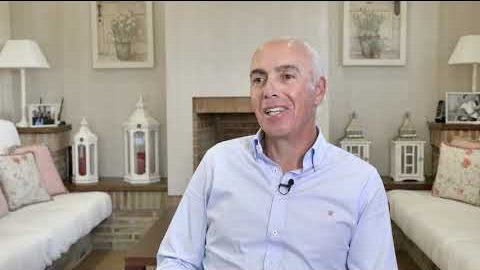
«I had a hole in the patellar tendon»
«I had a hole in the patellar tendon»
Enric, suddenly started experiencing knee pain, and after some tests he discovered that he had a 3 to 4 cms injury in the patellar tendon.
At that time, the only treatment was to stich the tendon, but Enric agreed to became one of the first patients to receive implanted cultured stem cells. The pain disappeared inmediately and his tendon regenerated, fully restoring the injury.
Today, years later, he continues to enjoy skiing and his life as he had never had an injury.
The American Journal of Sports Medicine supports us
The American Journal of Sports Medicine supports us
ITRT has conducted a clinical trial with cultured stem cells which proves for the first time ever that tendons can be regenerated.
The results show an unprecedented degree of tendon structure regeneration in 100% of patients, with a return to play within 2 months.
The prestigious medical magazine American Journal of Sports Medicine, has published the outcomes and has recognized this abstract as «one of the most significant advances from the latests decades».

The American Journal of Sports Medicine supports us
ITRT has conducted a clinical trial with cultured stem cells which proves for the first time ever that a tendon can be regenerated.
The results show an unprecedented degree of tendon structure regeneration in 100% of patientes, with a return to play within 2 months.
The prestigious medical magazine American Journal of Sports Medicine, has published the results and has recognised this abstract as «one of the most significant advances of the latests decades».
